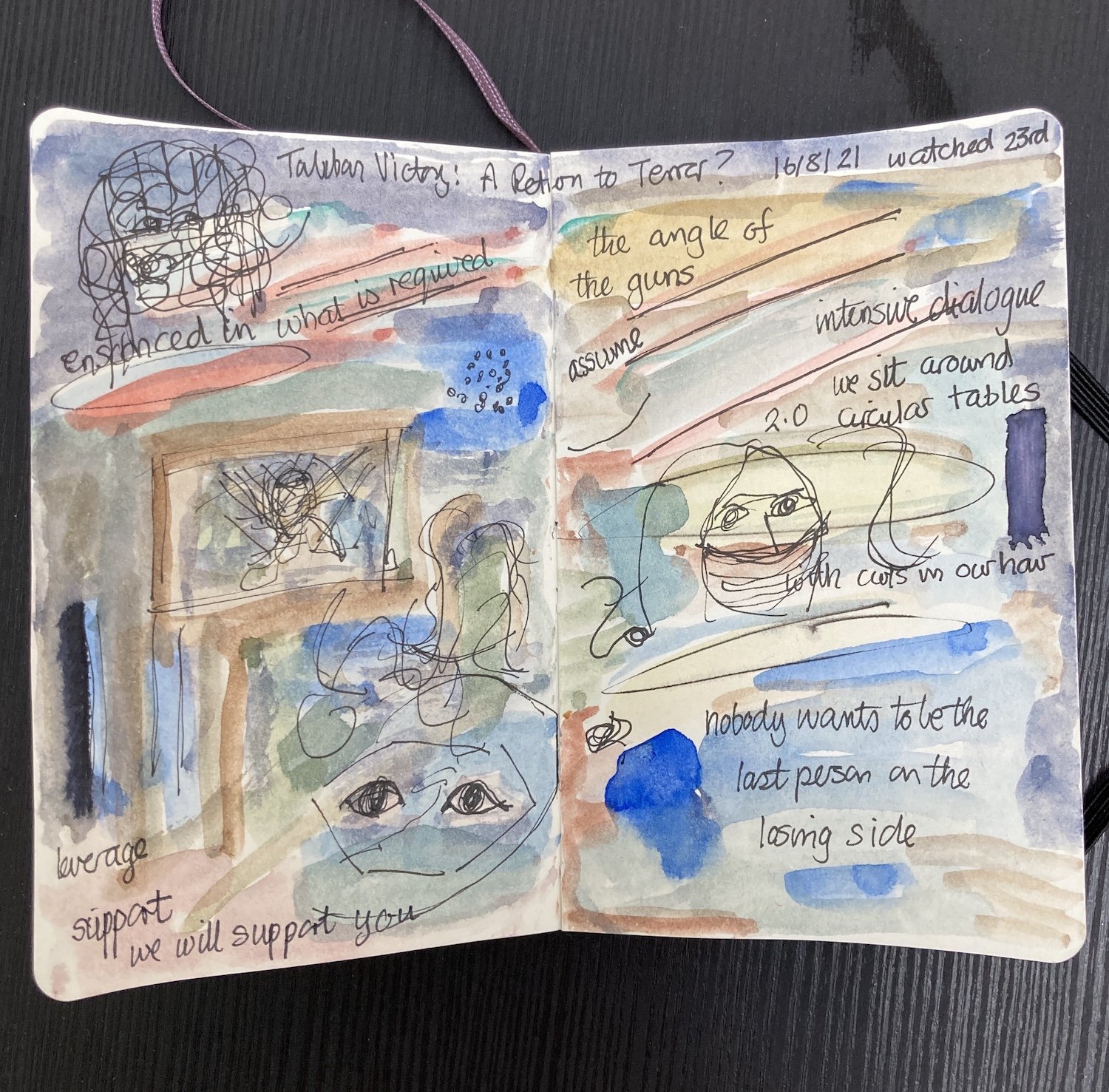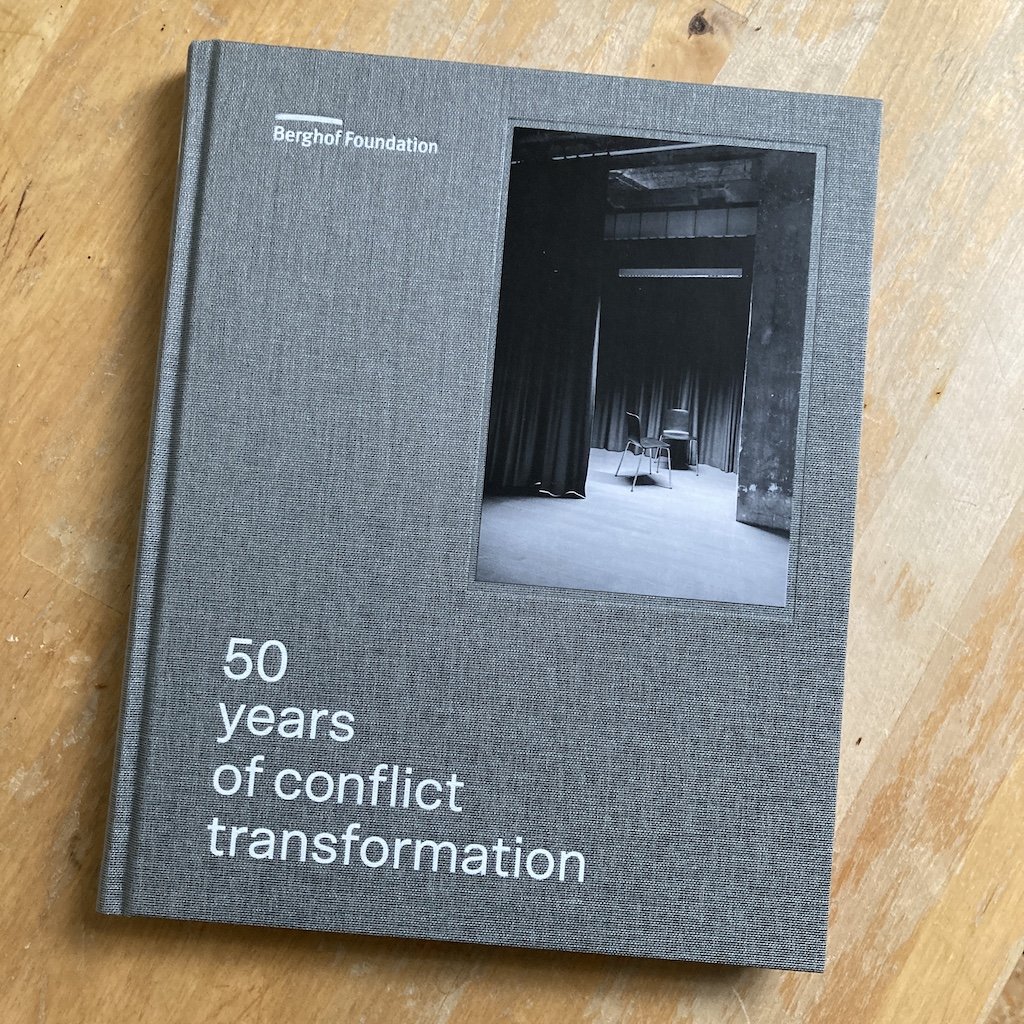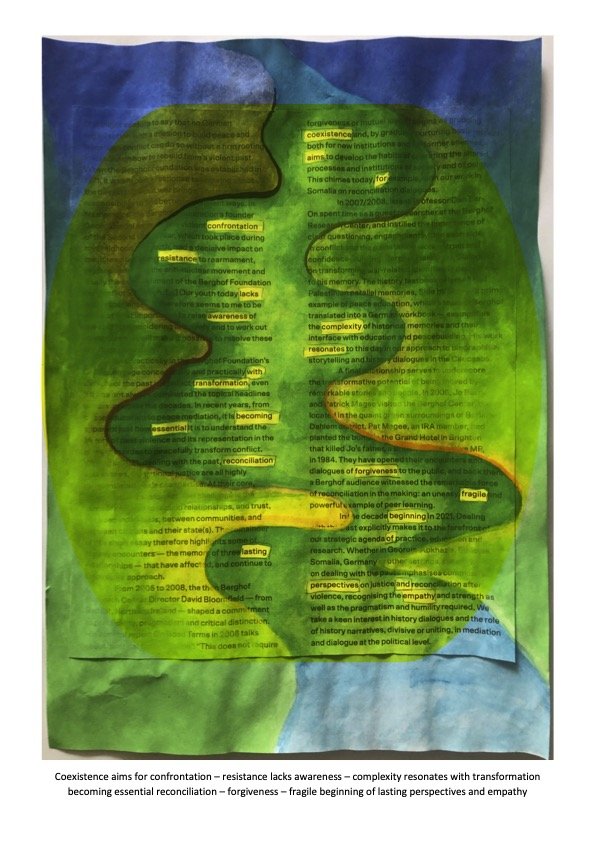My vision for this work is best described as bringing my art practice alongside conflict transformation in the belief that something positive can happen in that shared creative space.
I don’t claim to know what will happen or even how. My experience does convince me that opening up my painting practice offers opportunities for other people to feel energised and more vibrant. And that feels like something valuable to offer to people engaged in the vital, difficult work of conflict transformation and peace building, the people who do the field work and the people who produce resources for them.*
So there I was with these ideas offered to the Berghof Foundation and received with interest. How to proceed when the pandemic prevented me travelling?
Home studio
As an artist, paintings emerge out of my, almost daily, studio practice and are intrinsically connected to my lived experience: what I’m reflecting on, what I’m reading, who and what I’m seeing day by day. In my original vision, residency artwork would come out of taking that studio practice into dialogue with the new environment, responding creatively to the work of the organization through empathic engagement with its people, practices, and processes.
Instead I began this engagement online, watching interviews and documentaries on the website, attending a Zoom staff meeting where I introduced myself and the idea of the residency. To these ‘watchings’ I took along my sketchbook, capturing words and images that resonated for me, later adding colour as I reflected on what I’d heard and see. The tempo of a voice might prompt a line moving across the page. The emotion heard behind a related experience might prompt a colour.
I started a series of online ‘Studio Interludes’ with staff, inviting them to my studio to see what was in progress, talking about art and conflict transformation, and about other artists. (More on these in la later post.)
In the summer of my missed visit, BF sent me a copy of their 50th anniversary book that celebrates the work they have done since being founded in 1970. The carefully wrought texts and images in the book helped me immerse myself further in the work of the Foundation. And as I continued my studio practice at home in Scotland, I began to see how these very pages could be the beginning of residency artworks, as ‘found poems’.
Next time, the process of creating the found poems…
*It seems likely that art can be of benefit to conflicted parties during the processes of negotiating and building peace. I’m not yet in a position to claim that or to offer many strategies for doing it. I am collecting examples of such work.






